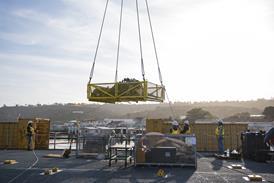Andrzej Jeziorski/SINGAPORE
Investigations into the accident which destroyed the Airbus A310 operating Thai Airways International flight TG261 on 11 December are focusing on weather conditions, human factors and the lack of a working instrument landing system (ILS) at Surat Thani Airport, Thailand.
The 12-year-old A310-200 (HS-TIA), one of two operated by Thai, crashed after abandoning its third attempt to land at the airport following two go-arounds. The impact killed 101 passengers and crew, but 45 people survived. Early assessments of how the aircraft crashed have been hampered by the fact that much of the wreckage was moved during the search for survivors.
The ILS has been inoperative for six months owing to runway extension work, and the pilot was using the non-precision VHF navigation beacon (VOR) and distance measuring equipment for the approach to runway 22 . Weather reports are contradictory, although Thai says that winds at Surat Thani were varying from 15-25kt (28-46km/h) and visibility was 1.5km (1nm) in heavy rain, with clouds at 1,200ft (350m) and heavy cloud coverage at 2,000ft. One source close to the investigation says that survivors recalled being able to see "nothing but rain" through the cabin windows. Survivors' descriptions of the aircraft's last moments consistently report a nose-high attitude and airframe shaking before impact, suggesting a stall.
Witnesses say the aircraft came in too high on its first approach and was too far to the left of the runway on its second, flying close to the terminal. On its third approach, the aircraft passed even further to the left of the runway, veered to the left as it passed the control tower, and crashed 700m beyond the tower. The flight data recorder and cockpit voice recorder have been recovered. The crew reportedly said that if the third approach was unsuccessful, they would return to Bangkok.
Thai, which dismisses aircraft faults as a cause, has released a key section of its flight operations manual which says that its pilots are only to make two approach attempts before diverting to an alternate airport, with a third approach mandated only if conditions improve "considerably".
Source: Flight International























